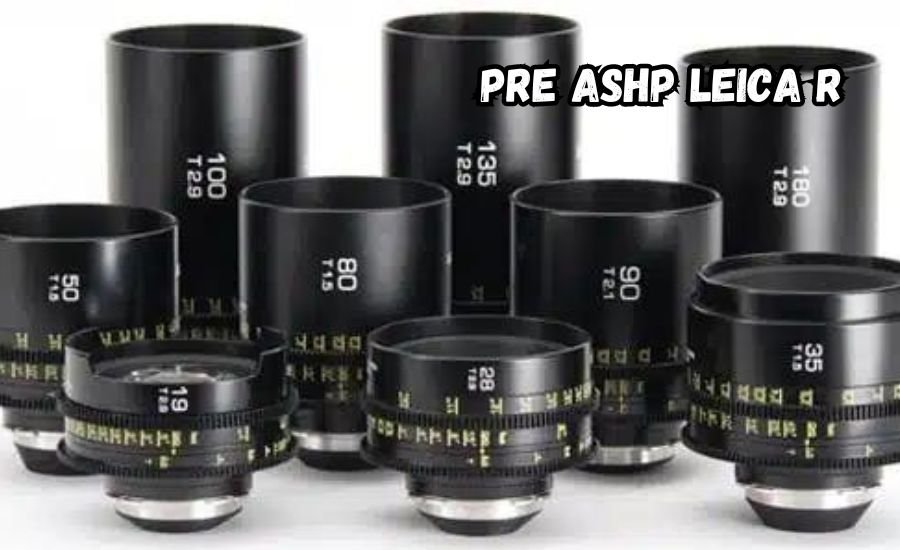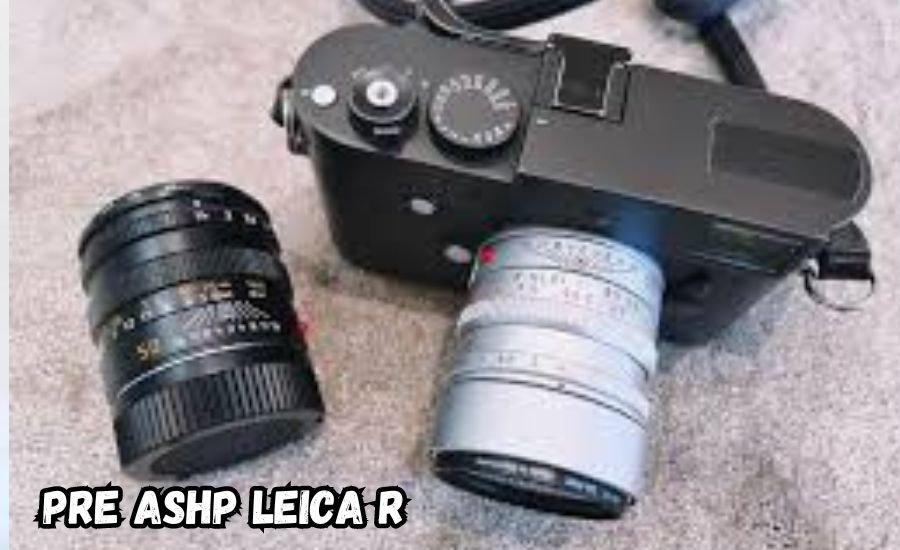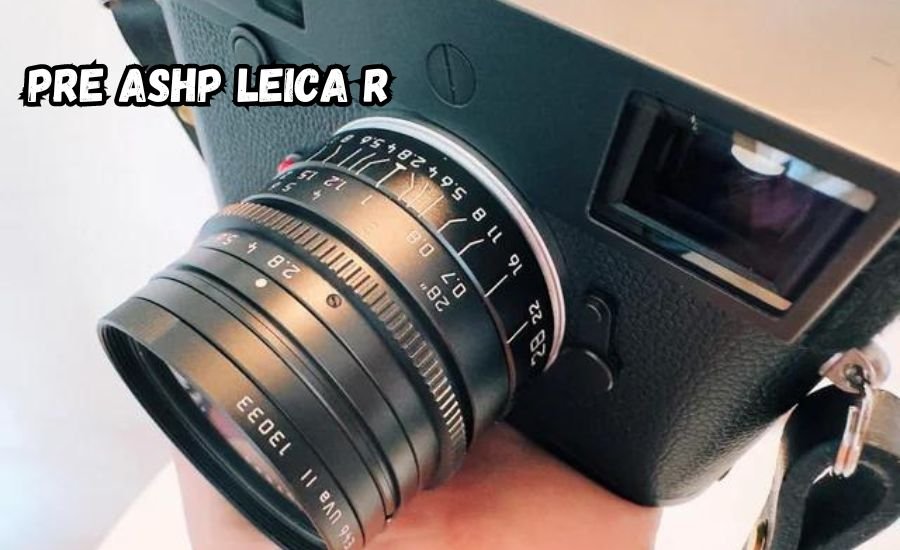The Ultimate Guide to Pre ASPH Leica R Lenses: Vintage Optics for Modern Photography

In the world of photography, few names carry the same prestige as Leica. Known for their outstanding craftsmanship and optical precision, Leica lenses have earned their place in the hearts of photographers everywhere. Among the many lenses that Leica has produced, the Pre ASPH Leica R series holds a special significance. These lenses were made before Leica introduced aspherical (ASPH) elements into their designs, giving them a distinct optical signature.
The term “Pre ASPH” refers to lenses manufactured before the adoption of aspherical lens elements, while the “R” indicates that these lenses were designed for Leica’s SLR (single-lens reflex) camera systems, not their M series rangefinders. Aspherical elements in lenses help correct certain optical imperfections like spherical aberrations, leading to sharper, more precise images. However, Pre ASPH Leica R lenses are cherished for their unique character, softer rendering, and classic, vintage appeal.
These lenses might not offer the same clinical sharpness as modern ASPH lenses, but that’s precisely why they remain beloved by photographers. They produce images with a more organic, film-like quality. In this guide, we’ll explore the history, characteristics, and enduring appeal of Pre ASPH Leica R lenses, and how you can use them to create stunning photographs.
The Rich Legacy of Pre ASPH Leica R Lenses
Leica has always been at the forefront of optical innovation. From the early days of photography, Leica lenses have been synonymous with precision, craftsmanship, and groundbreaking design. The Pre ASPH Leica R lenses represent a pivotal moment in the company’s history—an era where the art of optical design was more focused on aesthetic and character than technical perfection.
Leica’s R series of lenses were designed specifically for their SLR cameras, and the Pre ASPH versions were produced before Leica started using aspherical elements. Aspherical elements allow lens designers to reduce optical imperfections, but Pre ASPH lenses are celebrated for their imperfections. They offer a softer, more forgiving image quality that many photographers find artistically valuable.
Among the iconic lenses of this period is the Leica Summilux 50mm f/1.4 Pre ASPH, often referred to as one of the most beautiful lenses ever made for portrait photography. The lens produces a soft, creamy bokeh, with a magical “glow” around subjects when shot wide open. This signature look, often called the “Leica glow,” became a hallmark of Pre ASPH lenses.
Photographers today still seek out these lenses, despite the advancements in optical technology, because they evoke a sense of nostalgia and offer a distinct rendering that modern lenses can’t replicate. The craftsmanship and durability of these lenses also play a big role in their lasting popularity.
Key Characteristics of Pre ASPH Leica R Lenses
When we talk about Pre ASPH Leica R lenses, we’re talking about lenses with unique optical characteristics. These lenses are known for their softer image rendering, particularly when shot at wide apertures. While they might not be as sharp as modern lenses, they excel in producing a dreamy, artistic quality.
Softness and Smooth Bokeh
The most distinguishing feature of Pre ASPH Leica R lenses is their softness when shot wide open. This is particularly noticeable in portrait photography, where the soft rendering creates a gentle, almost ethereal look. The out-of-focus areas, known as bokeh, are rendered smoothly, with gradual transitions between the in-focus and out-of-focus areas.
For example, the Leica Summilux 80mm f/1.4 Pre ASPH is renowned for its ability to separate subjects from their backgrounds with an incredibly smooth bokeh. This lens, often used by portrait photographers, gives images a timeless quality that’s hard to achieve with modern lenses.
Chromatic Aberration and Vignetting
Pre ASPH lenses, while praised for their artistic rendering, do come with some optical imperfections. Chromatic aberration—color fringing around high-contrast edges—is more pronounced in these lenses, especially at wider apertures. Vignetting, the darkening of the corners of the frame, is also common.
While modern lenses have corrected these issues, many photographers embrace these “flaws” in Pre ASPH lenses because they contribute to the lens’s unique character. Instead of seeing them as defects, photographers use them creatively to enhance the mood of their images.
Robust Build Quality
Leica is famous for the durability and precision engineering of its lenses, and Pre ASPH Leica R lenses are no exception. These lenses were built to last, with high-quality materials and precise construction that ensure longevity. Many of the Pre ASPH lenses in use today are several decades old, yet they continue to deliver outstanding image quality.
This robust build quality makes Pre ASPH Leica R lenses a worthy investment. Photographers who buy these lenses know they’re getting a tool that will serve them well for years, if not decades.
You May Also Like: Folsom-City-Vocational
Comparing Pre ASPH and ASPH Leica R Lenses: Which is Better?

The introduction of ASPH lenses marked a significant shift in lens design. With the addition of aspherical elements, Leica was able to reduce optical imperfections like spherical aberrations, leading to sharper, more precise images. ASPH lenses are particularly suited to high-resolution digital cameras, where pixel-level sharpness is critical.
Sharpness and Contrast
ASPH lenses excel in delivering sharpness and contrast across the frame, especially at wide apertures. The precision of these lenses makes them ideal for commercial photography, where technical perfection is often required. ASPH lenses produce images that are crisp and free of distortions, even when shooting at the widest aperture.
In contrast, Pre ASPH Leica R lenses offer a softer, more forgiving look. While they may not be as sharp as their ASPH counterparts, this softness is often seen as an advantage, particularly in portrait photography. The softer rendering of Pre ASPH lenses creates a more natural, flattering look for skin tones, which is why many portrait photographers still prefer them.
Optical Imperfections as Creative Tools
While ASPH lenses correct many optical flaws, Pre ASPH lenses embrace them. Chromatic aberration, vignetting, and other imperfections contribute to the unique look of Pre ASPH lenses. These “flaws” can be used creatively to enhance the artistic quality of an image.
For photographers who prioritize artistic expression over technical perfection, Pre ASPH lenses offer a more personal, emotional connection to their images. The softer focus and pronounced bokeh make these lenses ideal for creating images with a vintage, film-like feel.
The Appeal of Pre ASPH Leica R for Film Photography
Although Pre ASPH Leica R lenses were originally designed for film cameras, their popularity has endured in the digital age. For film photographers, these lenses offer an aesthetic that complements the analog medium perfectly. The soft focus and smooth bokeh of Pre ASPH lenses align with the organic, timeless feel of film photography.
Complementing the Nostalgic Feel of Film
Film photographers often seek out Pre ASPH lenses because they enhance the nostalgic look of film. These lenses were designed in an era when technical perfection wasn’t the priority; instead, the focus was on creating lenses with character. This character is especially evident when shooting on film, where the imperfections of the lens blend with the organic grain of the film to create a uniquely timeless image.
Many film photographers choose lenses like the Leica Summicron 90mm f/2 Pre ASPH because of its beautiful rendering and ability to capture portraits with a soft, classic look. When paired with black-and-white film, these lenses produce images that evoke a sense of history and nostalgia.
Adaptability to Modern Film Cameras
Despite being designed decades ago, Pre ASPH Leica R lenses are still fully functional on modern film cameras. Their robust build quality and simple mechanical construction make them easy to use, even on contemporary film bodies. For photographers looking to shoot film with a lens that delivers a vintage look, Pre ASPH Leica R lenses are an excellent choice.
How Pre ASPH Leica R Lenses Perform on Digital Cameras

In recent years, Pre ASPH Leica R lenses have found new life in the digital world. Many photographers adapt these vintage lenses for use on modern mirrorless cameras, taking advantage of the unique rendering and optical characteristics that these lenses provide.
Adapting Pre ASPH Lenses to Digital Systems
With the rise of mirrorless cameras, it has become easier than ever to adapt legacy lenses to digital systems. Pre ASPH Leica R lenses can be adapted to a wide range of mirrorless cameras using affordable adapters. This allows digital photographers to experience the unique qualities of these lenses, even on modern high-resolution sensors.
The softer rendering of Pre ASPH lenses, combined with the precise detail of digital sensors, creates a beautiful blend of vintage and modern aesthetics. Photographers who prefer a more organic, film-like look in their digital images often turn to Pre ASPH lenses.
The “Leica Glow” in Digital Photography
One of the most beloved features of Pre ASPH Leica R lenses is the “Leica glow,” a soft halo effect that appears around subjects when shot wide open. This glow is especially prominent in portrait photography, where it helps separate the subject from the background. When adapted to digital cameras, this effect can still be achieved, allowing digital photographers to create images with a dreamy, ethereal quality.
Understanding the Craftsmanship Behind Pre ASPH Leica R Lenses
Leica has always been known for its commitment to craftsmanship, and this is evident in the design and construction of Pre ASPH lenses. These lenses were built to last, with high-quality materials and precise engineering that ensure their longevity.
Precision Engineering and Durability
Pre ASPH Leica R lenses are mechanical marvels, with smooth focusing rings, durable metal housings, and carefully assembled glass elements. Many photographers still use Pre ASPH lenses that are over 50 years old, and they continue to perform as well as they did when they were first manufactured.
This level of craftsmanship is one of the reasons why Pre ASPH lenses have stood the test of time. Even in the era of autofocus and electronic lenses, photographers still appreciate the tactile experience of using a beautifully made manual focus lens.
Conclusion: The Timeless Legacy of Pre ASPH Leica R Lenses
Pre ASPH Leica R lenses have a special place in the hearts of photographers who love vintage looks and artistic photography. Even though modern lenses offer sharper images, these classic lenses give a soft, dreamy effect that many people still prefer. They may not be perfect, but their imperfections add a unique charm that is hard to find in today’s lenses.
Whether you’re shooting on film or using a digital camera, Pre ASPH Leica R lenses allow you to create photos with a timeless feel. They remind us that photography isn’t just about technical perfection, but about capturing moments with character and emotion. These lenses will always have a place in the world of photography because they offer something special that modern lenses often cannot.
FAQS
Q: What are Pre ASPH Leica R lenses?
A: Pre ASPH Leica R lenses are vintage lenses made by Leica before they introduced aspherical (ASPH) elements, offering a softer and more artistic image quality.
Q: How do Pre ASPH lenses differ from ASPH lenses?
A: Pre ASPH lenses produce softer images with more pronounced bokeh, while ASPH lenses are sharper and correct more optical imperfections.
Q: Why are Pre ASPH Leica R lenses still popular?
A: Many photographers love their vintage aesthetic, smooth bokeh, and unique character, which create a timeless, artistic feel in photos.
Q: Can I use Pre ASPH Leica R lenses on digital cameras?
A: Yes, with adapters, Pre ASPH Leica R lenses can be used on many modern mirrorless digital cameras, maintaining their unique look.
Q: Are Pre ASPH Leica R lenses good for portrait photography?
A: Absolutely! Their soft focus and beautiful bokeh make them ideal for capturing flattering portraits with a classic feel.
Q: Do Pre ASPH Leica R lenses work well with film cameras?
A: Yes, these lenses were originally designed for film cameras, and they pair perfectly with film to deliver a nostalgic, vintage look.
Q: Are Pre ASPH Leica R lenses a good investment?
A: Yes, they hold their value well due to their craftsmanship, durability, and timeless appeal, making them a great choice for collectors and photographers alike.
Read Next: Finbusines



